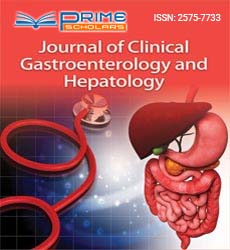Perspective - (2023) Volume 7, Issue 6
Navigating Chronic Liver Disease: Causes, Symptoms, and Management
Ming Ley*
Department of Biological science, Peking University, China
*Correspondence:
Ming Ley,
Department of Biological science, Peking University,
China,
Email:
Received: 29-Nov-2023, Manuscript No. IPJCGH-24-18985;
Editor assigned: 01-Dec-2023, Pre QC No. IPJCGH-24-18985 (PQ);
Reviewed: 15-Dec-2023, QC No. IPJCGH-24-18985;
Revised: 20-Dec-2023, Manuscript No. IPJCGH-24-18985 (R);
Published:
27-Dec-2023, DOI: 10.36648/2575-7733.7.6.59
Introduction
Chronic liver disease represents a significant global health
challenge, affecting millions of people and posing a considerable
burden on healthcare systems. Understanding the causes,
recognizing symptoms, and exploring management strategies
are crucial components in addressing this complex and often
silent condition. In this article, we will delve into the intricacies
of chronic liver disease to shed light on its various aspects.
Chronic liver disease encompasses a range of conditions that
lead to progressive damage and inflammation of the liver over an
extended period. Hepatitis B and C infections, excessive alcohol
consumption, non-alcoholic fatty liver disease, autoimmune
hepatitis, and genetic disorders such as hemochromatosis are
common contributors to chronic liver damage.
Description
Lifestyle factors, including obesity and diabetes, can also
elevate the risk of developing liver disease. In the early
stages, chronic liver disease may be asymptomatic, making it
challenging to detect until significant damage has occurred.
As the condition progresses, symptoms may include fatigue,
weakness, unexplained weight loss, jaundice yellowing of
the skin and eyes, swelling in the abdomen, and changes
in stool color. It is essential to note that individuals with
chronic liver disease may not experience symptoms until the
liver is severely compromised, underscoring the importance
of regular medical check-ups and screenings. Diagnosing
chronic liver disease involves a combination of medical
history, physical examinations, and various diagnostic tests.
Liver function tests measure enzymes and other substances
in the blood that indicate liver health. Imaging studies, such
as ultrasound, scans, can provide detailed images of the liver,
revealing abnormalities. In some cases, a liver biopsy may
be recommended to assess the extent of liver damage and
determine the underlying cause. Management of chronic liver
disease focuses on slowing or halting the progression of liver
damage, managing symptoms, and addressing the underlying
cause. Lifestyle modifications, such as adopting a healthy diet,
engaging in regular exercise, and limiting alcohol consumption,
play a pivotal role. For viral hepatitis, antiviral medications may
be prescribed, while autoimmune liver diseases may require
immunosuppressive drugs. In cases where irreversible liver
damage has occurred, liver transplantation may be considered.
Liver transplantation has proven to be a life-saving option for
individuals with end-stage liver disease, providing a chance for
a healthier and more fulfilling life. However, the availability of
donor organs and the complex nature of the procedure make
transplantation a last resort when other treatment options are
exhausted.
Conclusion
Preventing chronic liver disease involves a multifaceted
approach, addressing both lifestyle factors and infectious
causes. Vaccination against hepatitis B, practicing safe sex
to prevent hepatitis C transmission, and avoiding excessive
alcohol consumption are key preventive measures. Regular
health check-ups and screenings, especially for those with
risk factors, can aid in early detection and intervention.
Public awareness campaigns are instrumental in promoting a
proactive approach to liver health. Education about the causes,
symptoms, and preventive measures surrounding chronic liver
disease can empower individuals to make informed choices
about their lifestyles and seek medical attention when needed.
Furthermore, reducing the stigma associated with liver
diseases encourages open communication and destigmatizes
seeking medical help for these conditions.
Citation: Ley M (2023) Navigating Chronic Liver Disease: Causes, Symptoms, and Management. J Clin Gastroenterol Hepatol.
7:59.
Copyright: © 2023 Ley M. This is an open-access article distributed under the terms of the Creative Commons Attribution License,
which permits unrestricted use, distribution, and reproduction in any medium, provided the original author and source
are credited.

